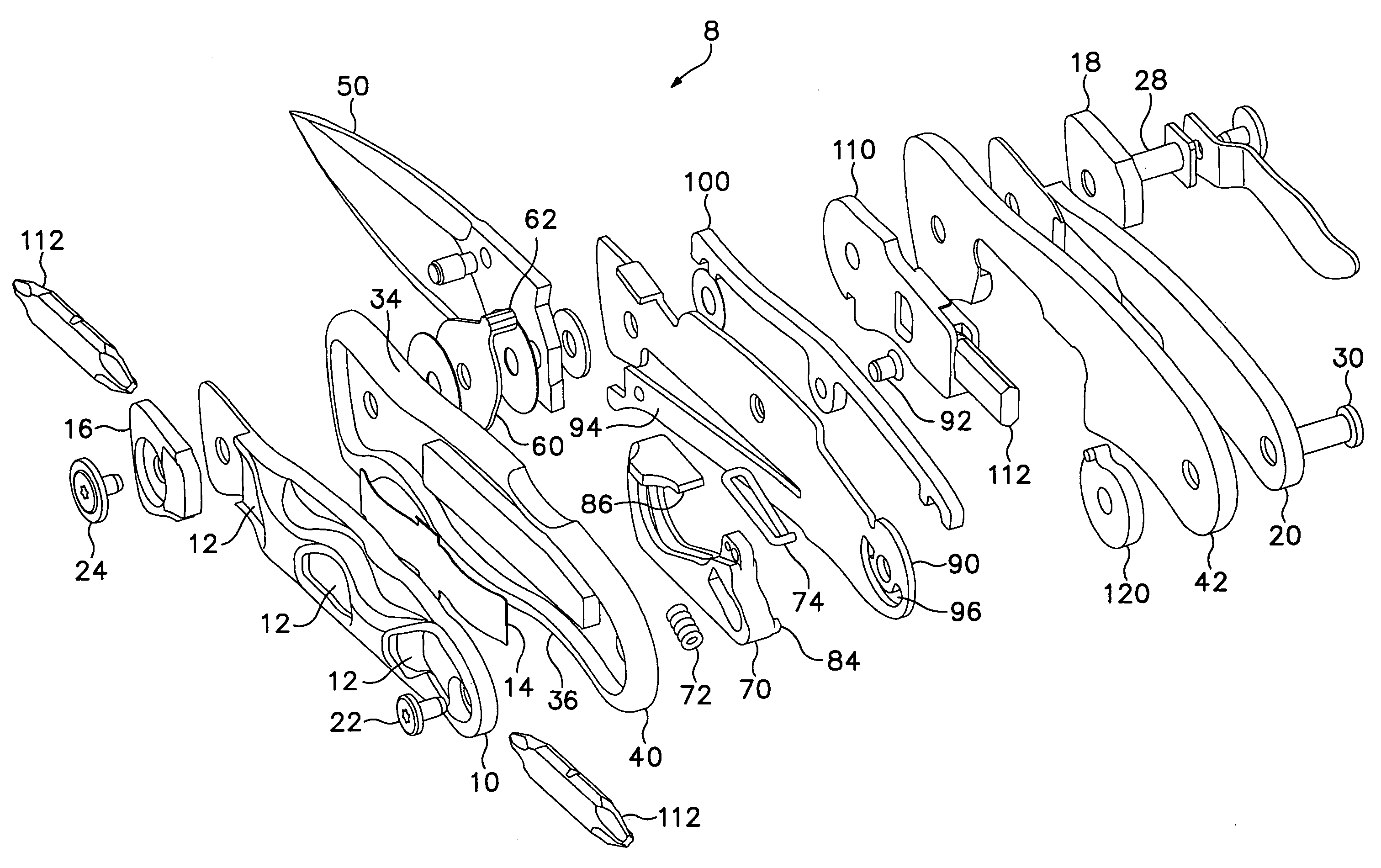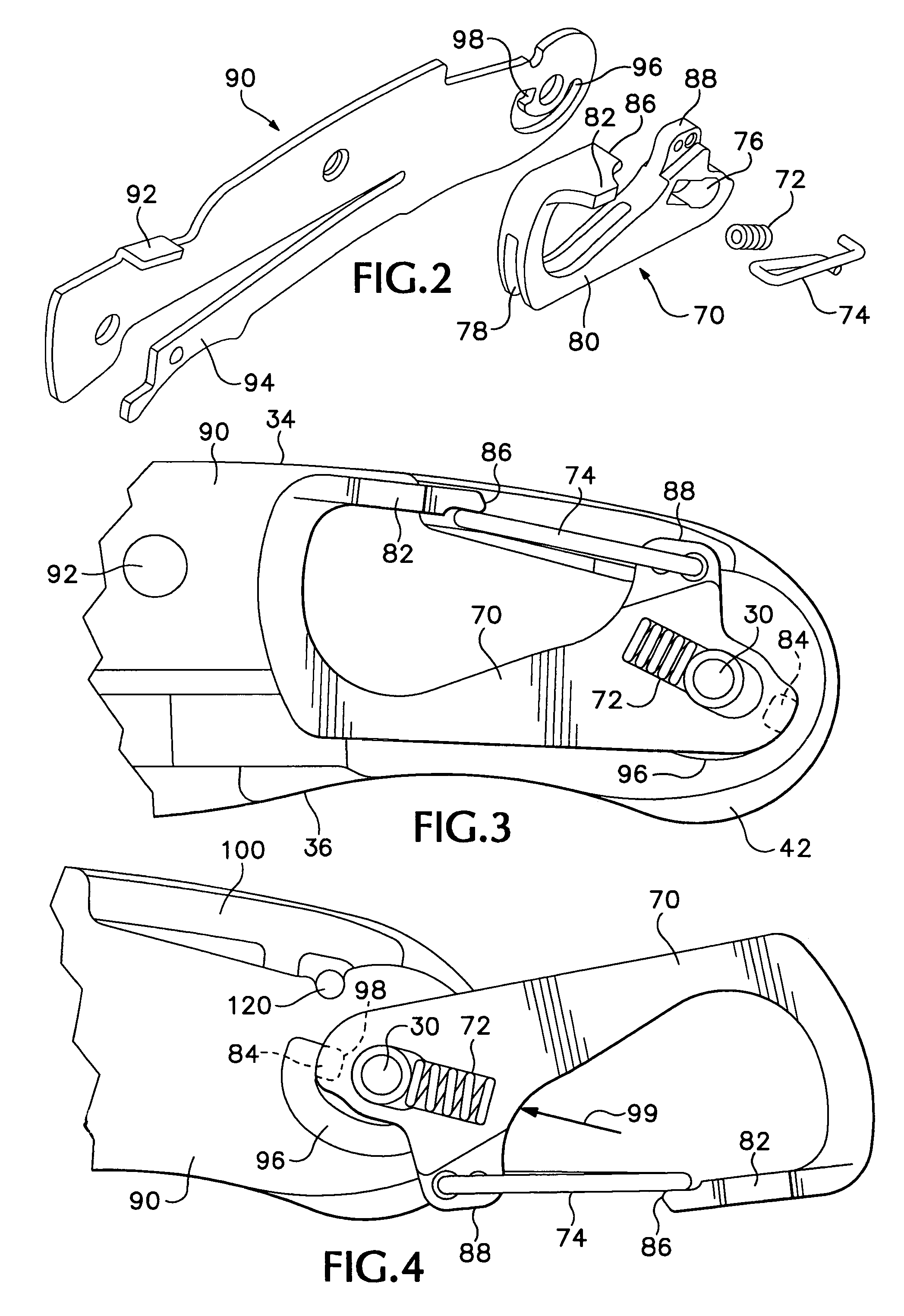Folding knife
a folding knife and folding technology, applied in the field of hand tools, can solve the problems of reducing the ease of storage and adding to the overall size of the folding knife, and achieve the effect of improving space utilization
- Summary
- Abstract
- Description
- Claims
- Application Information
AI Technical Summary
Benefits of technology
Problems solved by technology
Method used
Image
Examples
Embodiment Construction
[0028]Referring now to the drawing figures, wherein like reference numerals represent like parts throughout the several figures, FIG. 1 shows an exploded view of a tool 8 including a folding knife of one embodiment of the present invention. The knife of this embodiment contains a pair of scales 10, 20 including the outer surfaces of the knife. Scale 10 defines a cavity within its body frame having outwardly facing openings, generally shown at 12, wherein one or more interchangeable bits 112 can be stored, yet can easily be extracted for use as needed. A bit retention spring 14 exerts a lateral force on the interchangeable bits 112 to secure them when being stored. The bit retention spring 14 is fitted into a recess (not shown) in scale 10, and is secured by frame 40, which provides resistance for the spring 14 to act upon when the tool 8 is assembled. Optionally, scale 10 and frame 40 can be manufactured as one part to serve the functions of both parts, as can be scale 20 and frame ...
PUM
 Login to View More
Login to View More Abstract
Description
Claims
Application Information
 Login to View More
Login to View More - R&D
- Intellectual Property
- Life Sciences
- Materials
- Tech Scout
- Unparalleled Data Quality
- Higher Quality Content
- 60% Fewer Hallucinations
Browse by: Latest US Patents, China's latest patents, Technical Efficacy Thesaurus, Application Domain, Technology Topic, Popular Technical Reports.
© 2025 PatSnap. All rights reserved.Legal|Privacy policy|Modern Slavery Act Transparency Statement|Sitemap|About US| Contact US: help@patsnap.com



